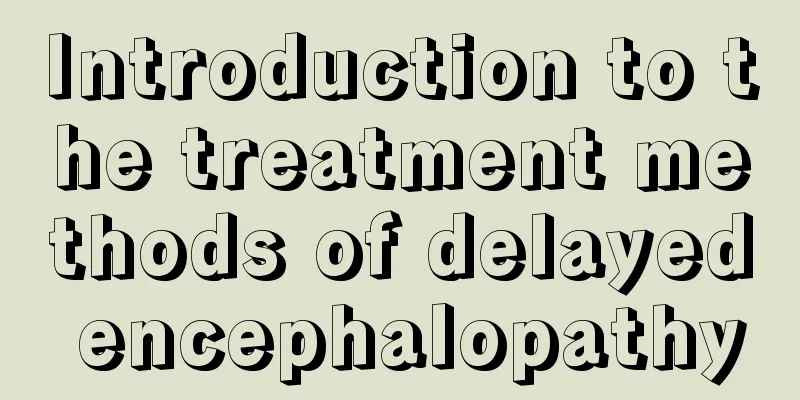Introduction to the treatment methods of delayed encephalopathy

|
Delayed encephalopathy actually refers to a neurological abnormality that occurs in patients with carbon monoxide poisoning several days after rescue and recovery, such as dementia or brain dysfunction. It must be treated correctly using some hormone drugs. 1. Delayed encephalopathy after acute carbon monoxide poisoning (DEACMP ) refers to a group of neuropsychiatric symptoms, mainly acute dementia, in which patients with carbon monoxide poisoning appear normal or nearly normal after a "false recovery period" of several days or weeks after the acute poisoning symptoms are recovered after rescue. Or some patients with acute carbon monoxide poisoning may suddenly develop brain dysfunction characterized by dementia, mental illness and extrapyramidal symptoms after their consciousness disorders return to normal during the acute phase and after a period of false recovery. It usually occurs within two months after acute poisoning. 2. Acute treatment (1) Hyperbaric oxygen therapy should last for more than 3 months or until the patient wakes up. (2) Hormone application: generally dexamethasone, 10 mg/d intravenous drip for more than 1 month. (3) The use of drugs to promote brain cell function recovery is the same as that for acute poisoning (4) Delayed encephalopathy is often accompanied by increased muscle tension. In this case, the muscle relaxant eperisone (eperisone hydrochloride) can be added as the drug of choice. 50-100 mg, 2-3 times/d. Those with tremor can try using benzhexol (Antan) 2-4 mg 3 times/d. You can also use levodopa/benserazide (Madopa) (250 mg per tablet) starting with 1/4 tablet in the morning, 1/2 tablet in the afternoon, and 1/4 tablet in the evening, and then gradually increase to the therapeutic dose to improve symptoms. (5) For patients in a long-term coma, pay attention to nutrition and provide nasogastric feeding. Pay attention to turning over and passive limb exercises to prevent bedsores and limb contracture deformities. 3. Rehabilitation treatment It is currently believed that patients with limb movement disorders (muscle atrophy, fasciculations, spasms, etc.) caused by delayed encephalopathy can significantly reduce or alleviate sequelae through formal rehabilitation training. Some people regard rehabilitation as particularly simple, or even equate it with "exercise", and are eager for quick results, which often results in half the effort and twice the results, and leads to joint and muscle injuries, fractures, shoulder and hip pain, increased spasms, abnormal spasm patterns and abnormal gait, as well as foot drop, inversion and other problems, namely "misuse syndrome". |
<<: Symptoms of waist pain, massage can help relieve
>>: What supplements are good for cerebral infarction? It turns out there are these 6 kinds
Recommend
What causes muscle tremors
Muscle tremors are vibrations that occur at a fre...
What are the harms of riding a bicycle
People only think of the benefits of riding a bic...
What are the harms of washing your face with milk
Although washing your face with milk has many ben...
What are the hazards of batteries to the human body?
Modern technology is developing very rapidly, and...
How to make frozen pork the best way
Frozen pork refers to pork that has been frozen i...
Key points for diagnosis of acute orchitis
Key points for diagnosis of acute orchitis. Nowad...
How to replenish liver yin deficiency? This is how you should eat!
Liver Yin deficiency is a common medical term. In...
What is the treatment for gastrointestinal cold and fever
In fact, nowadays many people do not pay attentio...
What are the taboos of bathing with mugwort leaves
Artemisia argyi is a plant of the Asteraceae fami...
How often should I drink seahorse soup
Seahorses are a very special type of seafood beca...
There are several varieties of sweet potatoes
Sweet potatoes have always been everyone's fa...
Why do I have dry and bitter mouth at night? He is causing trouble
Many people find that their mouth is very dry and...
What does a positive hepatitis B core antibody test mean?
Everyone is unfamiliar with medical terms and doe...
Oral mucosal congestion
Oral mucosal congestion is a very common oral dis...
How to get back together after breaking up for several months
Love is often the result of dopamine secretion in...









